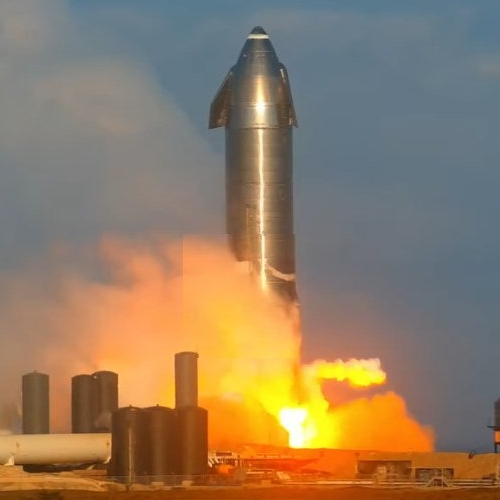Relativity touts next generation rocket before its first generation rocket has even launched
Capitalism in space: In an interview with CNBC the CEO of Relativity Space, Tim Ellis, pushed his company’s plans to develop a completely reusable rocket, dubbed the Terran-R, even though they have as yet completed even one test launch of their first rocket, the Terran-1.
Called Terran R, the reusable rocket is “really an obvious evolution” from the company’s Terran 1 rocket, Relativity CEO Tim Ellis told CNBC – the latter of which Relativity expects to launch for the first time later in 2021. “It’s the same architecture, the same propellant, the same factory, the same 3D printers, the same avionics and the same team,” Ellis said. “I’ve always been a huge fan of reusability. No matter how you look at it – even with 3D printing, and dropping the cost, and [increasing the] automation of a launch vehicle – making it reusable has got to be part of that future,” Ellis added.
Terran R is the first of several new initiatives that Ellis expects Relativity to unveil in the year ahead, with the company having raised more than $680 million since its founding five years ago. Just like Terran 1, Relativity will build Terran R with more than 90% of the parts through additive manufacturing – utilizing the world’s largest 3D printers as what Ellis calls “the factory of the future.”
Relativity, valued at $2.3 billion, ranks as one of the most valuable private space companies in the world. Its investors include Tiger Global Management, Fidelity, Baillie Gifford, Mark Cuban and more.
All well and good, but maybe before Ellis brags about his next generation rocket he might be better served to focus on getting that first rocket successfully off the ground later this year. It is a good thing his company is thinking of making its rockets reusable, but right now he is overselling while under-performing, a very bad sales technique. Better to do what Scotty of Star Trek did routinely, undersell while over-performing.
» Read more
Capitalism in space: In an interview with CNBC the CEO of Relativity Space, Tim Ellis, pushed his company’s plans to develop a completely reusable rocket, dubbed the Terran-R, even though they have as yet completed even one test launch of their first rocket, the Terran-1.
Called Terran R, the reusable rocket is “really an obvious evolution” from the company’s Terran 1 rocket, Relativity CEO Tim Ellis told CNBC – the latter of which Relativity expects to launch for the first time later in 2021. “It’s the same architecture, the same propellant, the same factory, the same 3D printers, the same avionics and the same team,” Ellis said. “I’ve always been a huge fan of reusability. No matter how you look at it – even with 3D printing, and dropping the cost, and [increasing the] automation of a launch vehicle – making it reusable has got to be part of that future,” Ellis added.
Terran R is the first of several new initiatives that Ellis expects Relativity to unveil in the year ahead, with the company having raised more than $680 million since its founding five years ago. Just like Terran 1, Relativity will build Terran R with more than 90% of the parts through additive manufacturing – utilizing the world’s largest 3D printers as what Ellis calls “the factory of the future.”
Relativity, valued at $2.3 billion, ranks as one of the most valuable private space companies in the world. Its investors include Tiger Global Management, Fidelity, Baillie Gifford, Mark Cuban and more.
All well and good, but maybe before Ellis brags about his next generation rocket he might be better served to focus on getting that first rocket successfully off the ground later this year. It is a good thing his company is thinking of making its rockets reusable, but right now he is overselling while under-performing, a very bad sales technique. Better to do what Scotty of Star Trek did routinely, undersell while over-performing.
» Read more


